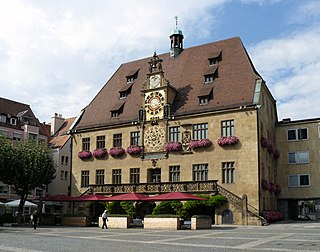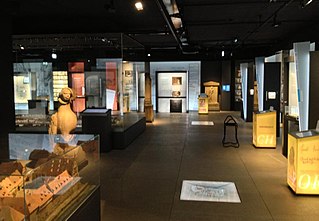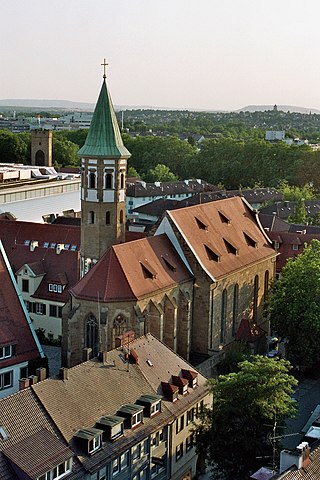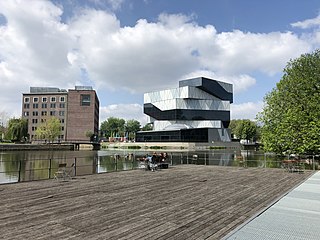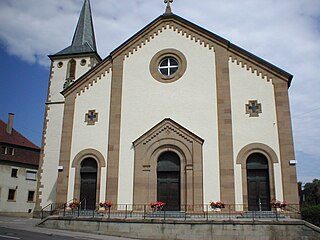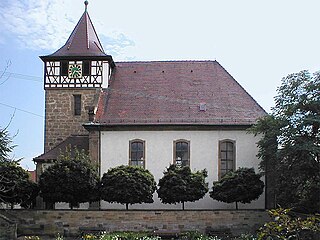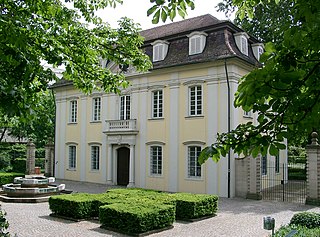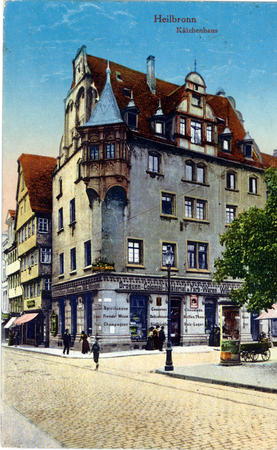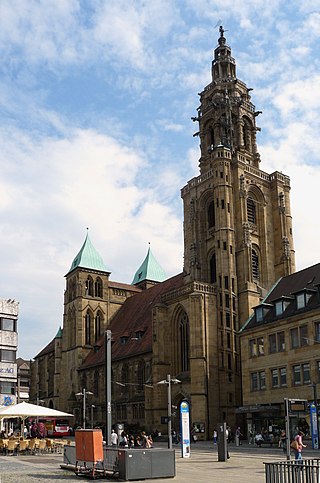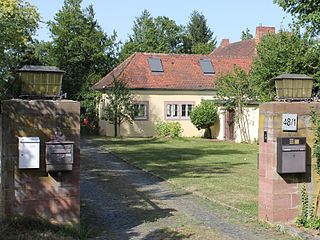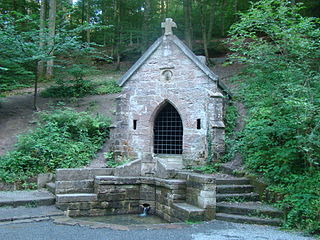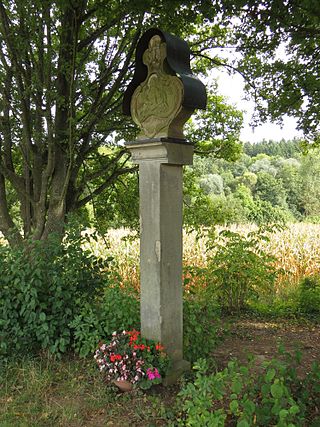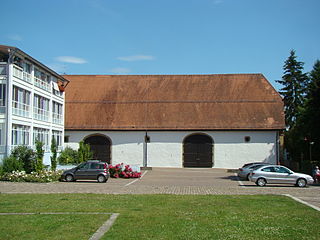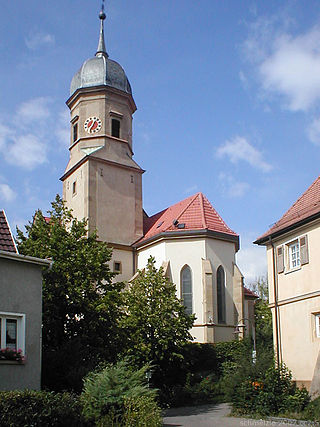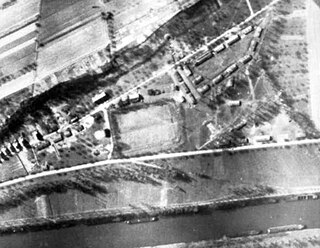25 Sights in Heilbronn, Germany (with Map and Images)
Legend
Welcome to your journey through the most beautiful sights in Heilbronn, Germany! Whether you want to discover the city's historical treasures or experience its modern highlights, you'll find everything your heart desires here. Be inspired by our selection and plan your unforgettable adventure in Heilbronn. Dive into the diversity of this fascinating city and discover everything it has to offer.
Sightseeing Tours in Heilbronn1. Rathaus
The town hall in Heilbronn is located in the centre of the historic centre of Heilbronn. Its main building is the main part of the Old Town Hall, which was rebuilt after its destruction in the Second World War. A four-winged, modern building complex is attached to it, which encloses the ruins of the old city archive from the 18th century, which have been converted into a hall of honour.
2. Haus der Stadtgeschichte / Otto Rettenmaier Haus
The House of City History in Heilbronn is the seat of the Heilbronn City Archive and offers research, documentation and museum services on the history of the city of Heilbronn. The facility was opened in its current form in July 2012.
Wikipedia: Haus der Stadtgeschichte (Heilbronn) (DE), Website
3. St. Peter und Paul
The Teutonic Order Minster in the Deutschhof in Heilbronn is a Catholic church built by the Teutonic Order, whose origins date back to the 13th century and which dates back to an older predecessor building.
Wikipedia: Deutschordensmünster St. Peter und Paul (Heilbronn) (DE)
4. Hagenbucher
experimenta is a science center in Heilbronn, Baden-Württemberg. The learning and adventure world is housed in the former Hagenbucher warehouse building and a new building on the Kraneninsel that opened in March 2019. It is intended to make science and technology understandable for people of all ages. experimenta consists of the "Worlds of Discovery" exhibition area, the "Worlds of Experience" with a Science Dome, observatory and experimental theater, and the "Researcher Worlds" in the existing building with eight laboratories, an experimental kitchen, the North Württemberg Youth Research Center, and the Maker Space.
5. St. Alban
St. Alban's Church in the Heilbronn district of Kirchhausen in northern Baden-Württemberg is a Catholic parish church. The church, built between 1841 and 1844 in the round arch style of the Neo-Romanesque style, is the oldest surviving church in the village, which was predominantly Catholic until the recent past due to its former affiliation to the Teutonic Order. In the course of the various renovation works in 1931 and 1981, monumental ceiling paintings by Anton Glassen from Heidelberg and August Blepp were lost.
6. Rathaus Ehrenhalle
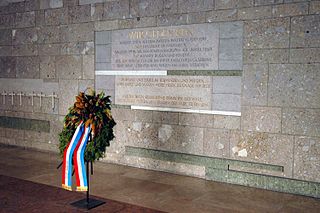
The Hall of Honour in Heilbronn made of Heilbronn sandstone is located in the inner courtyard of the Heilbronn town hall. The memorial with Hiroshima mosaic by Karl Knappe, erected in the ruins of the Old City Archive, commemorates the dead of the Second World War and the victims of the Third Reich and is one of numerous important buildings in Heilbronn.
7. Horkheimer Burg

Horkheim Castle is a moated castle in today's Heilbronn district of Horkheim, which existed as early as the 14th century, and from the 17th to the 19th century was the residence and synagogue of the village's Jews.
8. Mesnerhaus
The Protestant St. Peter's Church in the Heilbronn district of Neckargartach is a choir tower church from the time of the medieval fortified churches, whose Gothic tower choir has been incorporated into a Baroque church building from 1766/67.
9. Schießhaus
The Schießhaus is a rococo building in Heilbronn. The building, which was built around 1770, takes its name from its original use as a shooting house, and it was also the hall building of the Heilbronn horse market, which was founded at the same time. The building has always been owned by the city of Heilbronn and has already served a wide variety of purposes.
10. Georgskirche
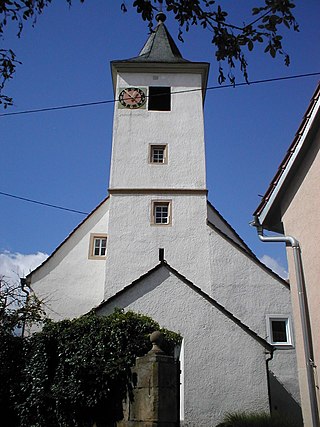
The Georgskirche is a parish church first mentioned in the 14th century in Horkheim, a district of Heilbronn in Baden-Württemberg. In and around the church, which was essentially given its shape by a new building in 1610/11, historical grave slabs of the patrician Lemlin family have been preserved.
11. Käthchenhaus
The Käthchenhaus is a private secular building of the 14th century at Marktplatz 1 in Heilbronn. The house with the striking bay window on the corner of Kaiserstraße got its current name in the 19th century from the then popular play Das Käthchen von Heilbronn.
12. Kriegerdenkmal
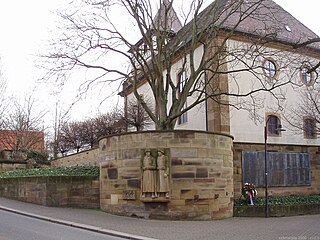
The war memorial in front of St. Peter's Church in the Heilbronn district of Neckargartach is a memorial for the fallen of the First World War, inaugurated in 1937, which was slightly changed after the Second World War and supplemented by the names of the fallen in 1939/45.
13. Evangelische Pfarrkirche St. Cornelius und Cyprian
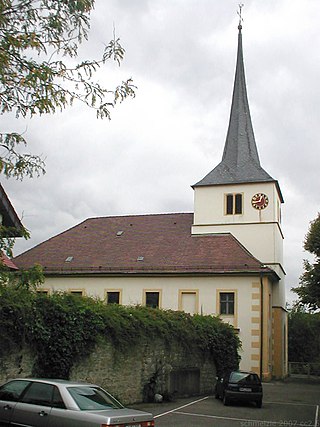
The Protestant parish church of St. Cornelius and Cyprian in the Heilbronn district of Biberach was built in 1830 and goes back to a predecessor building from the 15th century, which was used as a simultaneous church for Protestants and Catholics after 1675.
Wikipedia: Evangelische Pfarrkirche St. Cornelius und Cyprian (Biberach) (DE)
14. Bürgeramt Sontheim
The former town hall at Hauptstraße 7 in Sontheim was built in 1895 as a residential building and converted into the town hall in 1905. The ground floor is horizontally structured in the neo-Renaissance style and the upper floor shows country house character through the decorative exposed half-timbering. The house is a listed building.
15. Kilianskirche
Kilian's Church on Kaiserstraße in Heilbronn is a Gothic hall church constructed from Heilbronner sandstone, whose origin dates back to the 11th century. Its western tower, constructed by Hans Schweiner, is one of the first major Renaissance buildings to be built north of the Alps. Inside the church there is an altar by Hans Seyffer from 1498, which is regarded as a masterpiece of sculpture from the Late German Gothic period. Some of the stained glass is by Charles Crodel. The Monument Foundation of Baden-Württemberg appointed the church as monument of the month in December 2016.
16. Christuskirche
The Christuskirche is a Protestant church in Heilbronn, which is located at Südstraße 118. It is the church of the Evangelical Southern Community of Heilbronn. The construction, which began in 1962, replaced an older wooden church from 1925.
17. Siebenröhrenbrunnen
The Siebenröhrenbrunnen is a listed fountain in Kirchbrunnenstraße in Heilbronn. The fountain probably contained the spring that gave the city of Heilbronn its name and was moved and redesigned several times in the course of its history.
18. Rechtsanwälte Freudrich & Krengel
The factory owner's villa with garden house in the factory park was built in 1948/49 according to plans by the architect Ludwig Hilmar Kresse for the merchant and owner of an oil factory Kurt Scheuerle and is located at Grünewaldstraße 48/1 and Limesstraße 9/1 in the Heilbronn district of Böckingen. The building is a listed building.
19. Autohaus Maroge
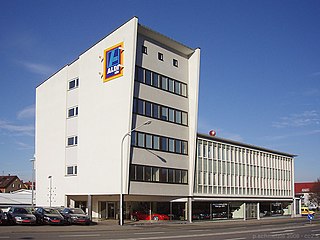
The Autohaus Assenheimer is the former business building of a car dealership at Stuttgarter Straße 2 in Heilbronn. The building, related in 1961, is a listed monument protection as a cultural monument.
20. Köpferbrunnenanlage
The Köpferbrunnenanlage in the wooded Köpfertal valley in the east of Heilbronn is a listed historical ensemble. Its core is formed by a chapel or hermitage with a fountain and a music pavilion. In its present form, it was built by the Heilbronn Beautification Association in the last decades of the 19th century.
21. Annakreuz
The Annakreuz is a monument at the intersection of the boundary of Hipfelhof, Leingarten and Kirchhausen on a hill west of the Rotbach with "sophisticated sculptural design in baroque forms". The listed square sandstone column is 3.20 meters high. Not far from the Annakreuz is the Annalinde.
22. Zehntscheune
The historic tithe barn at Schlossplatz 5 in the Heilbronn district of Kirchhausen is one of the few surviving historic outbuildings at the Teutonic Order Castle in Kirchhausen. The listed building is considered a cultural monument.
23. St.-Martins-Kirche
The Catholic Church of St. Martinus in Sontheim, a district of Heilbronn in northern Baden-Württemberg, is the oldest church in the village and also marks the historic centre of Sontheim. The church still has a Gothic choir, and the nave was replaced in 1904 by a new building in the Neo-Romanesque style.
24. KZ-Friedhof Heilbronn-Neckargartach
The Neckargartach concentration camp, also known as the Steinbock SS labor camp, was a concentration camp of the Schutzstaffel (SS) in Neckargartach, a northern district of Heilbronn. The camp was in operation from the beginning of September 1944 to April 1, 1945. It was one of the so-called "Neckar camps" and thus one of the subcamps of the Natzweiler-Struthof concentration camp.
25. Widmann’sche Papiermaschinenfabrik
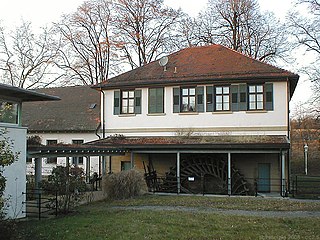
The Widmann'sche Papiermaschinenfabrik im Leintal in Neckargartach was a machine factory founded by Johann Jakob Widmann. Widmann had built the first continental European paper machine during the onset of industrialization and produced it in a workshop in Heilbronn until 1840, before he acquired the site in the Lein Valley and built a new factory there. The remains of a workshop building are still preserved from the plant, which continued to be used as a paper mill after Widmann's bankruptcy, was converted into a pumping station around 1900 and used as such until the 1960s. In the second half of the 1990s, the facility was renovated and a historic hammer forge was added. The property now forms the Neckargartach Historic Industrial Park.
Share
Disclaimer Please be aware of your surroundings and do not enter private property. We are not liable for any damages that occur during the tours.
